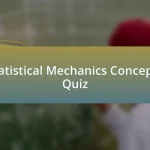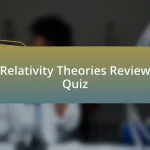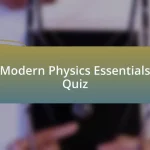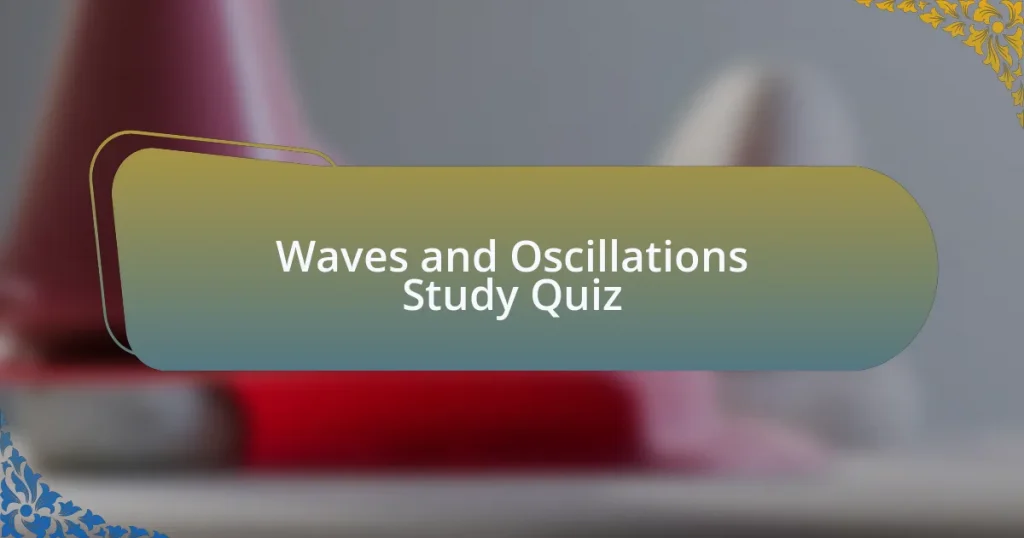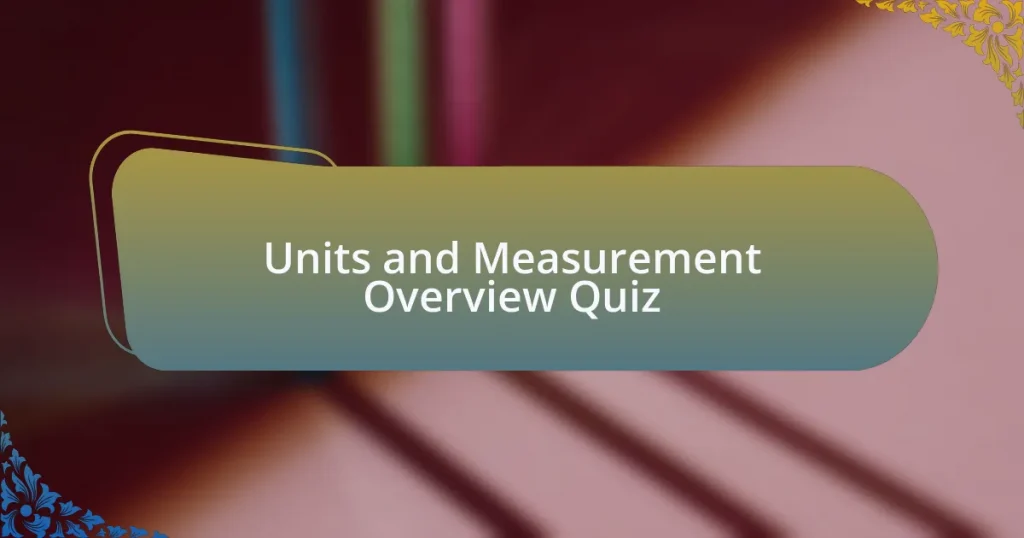Start of Waves and Oscillations Study Quiz
1. What is the frequency, in hertz, that corresponds to a period of 0.1 seconds?
- 10 Hz
- 15 Hz
- 5 Hz
- 2 Hz
2. If a wave has a period of 3 seconds, what is its frequency?
- 6 Hz
- 1 Hz
- 3 Hz
- 0.33 Hz
3. What is the wavelength of a wave with a frequency of 5 Hz and a speed of 15 m/s?
- 8 m
- 2 m
- 3 m
- 5 m
4. Can two waves interfere to create a wave with greater amplitude?
- Yes.
- No.
- Only in certain conditions.
- Only if they are identical.
5. If a sound source moves away from you while you are at rest, do you measure an increase or decrease in the frequency of its sound wave?
- No change
- Decrease
- Increase
- Variable
6. What type of motion is the source of all mechanical waves?
- Accelerating masses
- Static forces
- Rotating planets
- Vibrating objects
7. Between a short and a long pendulum, which has the shorter period?
- Neither pendulum.
- Short pendulum.
- Long pendulum.
- Both pendulums.
8. What is the frequency in hertz represented by a radio wave of 99.5 MHz?
- 9,950,000 Hz
- 99,500 Hz
- 99,500,000 Hz
- 995,000 Hz
9. How is period related to frequency?
- Frequency = 1 / Period.
- Frequency = Period / 1.
- Frequency = Period × 2.
- Frequency = 2 / Period.
10. In one word, what are waves primarily transporting?
- Energy
- Force
- Matter
- Static
11. Does the medium through which a wave travels itself move along with the wave? Provide an example.
- Only in special cases does the medium move. Example: Sound waves in water.
- Sometimes, the medium moves slightly. Example: Ripples in a pool.
- No, the medium does not move. Examples: Sound waves in air, light waves in vacuum.
- Yes, the medium moves with the wave. Example: Ocean waves on a boat.
12. What is the equation that describes the relationship among frequency, wavelength, and wave speed?
- f = v/λ.
- λ = vf.
- v = fλ.
- v = f – λ.
13. In a transverse wave, how are the vibrations oriented with respect to the wave travel direction?
- Diagonal
- Perpendicular
- Circular
- Parallel
14. In a longitudinal wave, how are the vibrations oriented with respect to the wave travel direction?
- Random
- Parallel
- Perpendicular
- Vertical
15. What is the definition of a wavelength for a longitudinal wave?
- The speed of the wave divided by frequency.
- The time it takes for one complete wave cycle.
- The distance between two nodes.
- The distance between successive compressions.
16. What does the superposition principle state about overlapping waves?
- The principle that waves cannot interfere with each other at all.
- The principle that all waves move at the same speed regardless of frequency.
- The principle that two or more waves can overlap to form a resultant wave.
- The principle that waves can only travel in a straight line.
17. What types of waves can demonstrate interference patterns?
- All types of waves.
- Only sound waves.
- Only mechanical waves.
- Only light waves.
18. Define a node and an antinode in wave terminology.
- Node: Point of maximum amplitude. Antinode: Point of zero amplitude.
- Node: Halfway point in a wave. Antinode: Peak location in a wave.
- Node: Point of zero amplitude. Antinode: Point of maximum amplitude.
- Node: The wave`s speed. Antinode: The wave`s frequency.
19. In the Doppler effect, does the speed of the wave change when the source moves?
- Yes, the speed of the wave increases.
- No, the speed of the wave does not change.
- Yes, the speed of the wave decreases.
- Yes, the speed of the wave varies randomly.
20. Is the Doppler effect applicable to sound waves only?
- Yes, it only applies to light waves.
- No, it is applicable to both sound and light waves.
- No, it is only for radio waves.
- Yes, it is only for sound waves.
21. How does a supersonic jet travel relative to the sound barrier?
- Travels at the speed of sound.
- Equal to the speed of sound.
- Faster than the speed of sound.
- Slower than the speed of sound.
22. How does the shape of a wave front change as the speed of the source increases?
- The wave front becomes narrower as the speed of the source increases.
- The wave front disappears at high speeds.
- The wave front stays the same regardless of speed.
- The wave front becomes wider as speed increases.
23. What factors affect the period of a pendulum?
- Mass of the bob
- Length of the string
- Shape of the pendulum
- Amplitude of the swing
24. In a scenario involving swings of equal length, who will complete swings faster, heavier or lighter individuals?
- Neither completes swings
- Both complete swings at the same time
- Lighter individuals
- Heavier individuals
25. What happens to the frequency of a pendulum if its length is altered?
- Frequency decreases.
- Frequency doubles.
- Frequency increases.
- Frequency remains constant.
26. When frequency decreases, what happens to the period of a wave?
- Increase
- Decrease
- Remain the same
- Oscillate
27. How does changing the wavelength of a wave affect its frequency if the speed remains constant?
- Frequency remains unchanged as wavelength changes.
- Frequency increases as wavelength decreases.
- Frequency is unrelated to wavelength changes.
- Frequency decreases as wavelength decreases.
28. What is the result on frequency if the speed of a wave is doubled with a constant wavelength?
- Frequency halves
- Frequency doubles
- Frequency triples
- Frequency remains the same
29. What change occurs in the period of a wave if frequency is quadrupled?
- The period is quadrupled.
- The period is doubled.
- The period remains the same.
- The period is reduced to one-fourth.
30. At what frequencies do the second hand, minute hand, and hour hand of a clock operate?
- Second hand: 1 Hz, Minute hand: 0.1 Hz, Hour hand: 0.01 Hz.
- Second hand: 0.5 Hz, Minute hand: 0.05 Hz, Hour hand: 0.002 Hz.
- Second hand: 0.75 Hz, Minute hand: 0.075 Hz, Hour hand: 0.005 Hz.
- Second hand: 0.25 Hz, Minute hand: 0.025 Hz, Hour hand: 0.001 Hz.
Congratulations! You’ve Successfully Completed the Waves and Oscillations Quiz!
Well done on finishing the quiz on Waves and Oscillations! This topic is essential in Physics, as it lays the groundwork for understanding various phenomena in both classical and modern physics. You’ve explored key concepts such as wave properties, oscillatory motion, and the mathematical relationships that govern them. Each question challenged you to think critically about these principles, enhancing your comprehension of how waves interact with the world around us.
Through this quiz, you likely reinforced your understanding of critical terms like frequency, amplitude, and phase. Recognizing how these factors influence the behavior of waves can help you in future studies. Additionally, you may have gained insight into real-world applications, such as sound and light waves. These foundational concepts are crucial as you prepare for more advanced topics in physics.
To continue expanding your knowledge, we invite you to check out the next section on Waves and Oscillations. Here, you will find detailed explanations, examples, and resources that will deepen your understanding of the subject. Engaging with this material will make you more prepared for exams and enhance your overall proficiency in physics. Keep up the great work, and let’s dive deeper into the fascinating world of waves and oscillations!
Waves and Oscillations Study
Understanding Waves in Physics
Waves are disturbances that transfer energy through space or materials without permanent displacement of the medium. They can be classified into mechanical waves, which require a medium, and electromagnetic waves, which do not. Mechanical waves include sound waves and water waves, while light is an example of an electromagnetic wave. Understanding wave properties such as wavelength, frequency, amplitude, and speed is fundamental in physics. These properties help describe how waves function and interact, providing essential insights into various physical phenomena.
The Concept of Oscillations
Oscillations refer to periodic motions that repeat after a certain interval. In a physics context, oscillations can be simple, like a mass on a spring, or complex, like the motion of a pendulum. The main characteristics of oscillations include amplitude, period, and frequency. An important aspect is that oscillatory motion can be described mathematically using sine and cosine functions. This mathematical representation allows for predicting an oscillator’s future positions and energies, making it crucial for studying systems in physics.
Types of Waves: Longitudinal and Transverse
Waves can be categorized into two primary types: longitudinal and transverse waves. Longitudinal waves, such as sound waves, have particle displacement parallel to wave motion. In contrast, transverse waves, such as light waves, have particle displacement perpendicular to wave motion. This distinction is significant because it influences how waves propagate and interact with materials. For instance, sound waves cannot travel through a vacuum since they rely on a medium, unlike electromagnetic waves.
Wave Interference and Superposition Principle
Wave interference occurs when two or more waves overlap, leading to a new wave pattern. This phenomenon is described by the superposition principle, which states that the resultant displacement is the sum of the individual wave displacements. Interference can be constructive, leading to increased amplitude, or destructive, resulting in decreased amplitude. This principle is fundamental in studying phenomena like beats in sound waves and patterns in wave optics, reinforcing concepts of energy transfer in waves.
Application of Waves and Oscillations in Real-World Systems
Waves and oscillations play critical roles in various real-world systems. In technology, they are foundational in communication systems, including radio and television, where radio waves transmit information. Similarly, seismic waves help scientists understand Earth’s structure and predict earthquakes. In engineering, oscillatory motion is essential for designing systems like clocks or musical instruments. Understanding these applications illustrates the relevance of wave and oscillation principles in both theoretical and practical contexts.
What are waves in the context of physics?
Waves in physics are disturbances that transfer energy through space and matter. They can be categorized into mechanical waves, which require a medium (like sound waves), and electromagnetic waves, which can travel through a vacuum (like light waves). This classification is supported by the defined principles of wave motion and energy transfer described in classical physics and wave theory.
How do oscillations relate to waves?
Oscillations refer to repetitive variations, typically in time, of some measure about a central value. They are integral to the formation of waves, as waves can be seen as the result of many oscillating particles moving through a medium. The basic characteristics of oscillation include amplitude, frequency, and period, all of which directly influence the properties of the resulting wave, as detailed in harmonic motion studies.
Where can waves be observed in everyday life?
Waves can be observed in various contexts, including sound waves produced by musical instruments, water waves in oceans and lakes, and light waves emitted by lamps or the sun. Each of these examples demonstrates the practical effects of wave behavior, such as resonance in sound and reflection in light, which are documented across numerous physics applications and experiments.
When do waves undergo reflection and refraction?
Waves undergo reflection when they encounter a barrier and redirect back into the original medium, as seen with sound bouncing off walls. Refraction occurs when waves pass from one medium to another, changing speed and direction, as light does when it enters water from air. These phenomena are characterized by specific laws, such as the law of reflection and Snell’s law in optics.
Who first studied the principles of waves and oscillations?
The principles of waves and oscillations have been studied since ancient times, but key contributions were made by scientists like Galileo Galilei and Isaac Newton. Galileo’s experiments on pendulums led to fundamental insights into periodic motion, and Newton’s laws of motion provide a framework for understanding vibrations and wave propagation. Their work laid the foundations for modern wave theory in physics.



